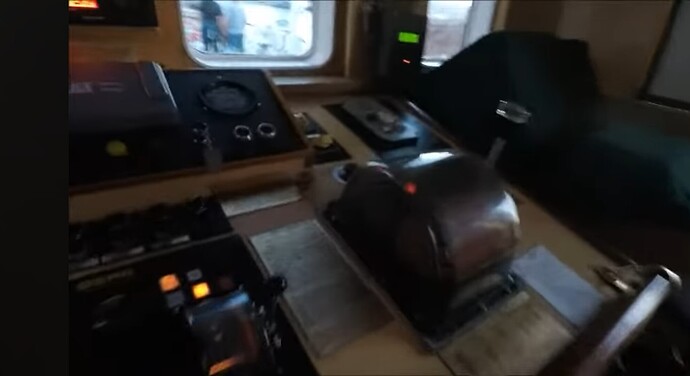All the talk about the default setting of a failed CPP being “go to reverse position” is new to me. But in my 29 years of working on floating things I never worked on tall ships or yachts. Here is what I’m familiar with.
The bridge gives a command & the CPP has a certain amount of time to reach that command or the gear/CPP will clutch-out.
Many systems will also place the unit into “Back-Up” mode whenever it cluthes out due to improper/delayed feedback signal.
After this happens, everything needs to be shut off, unit taken out of “Back-Up”, then restarted.
Below are memorable problems that comes to mind for me:
Problem #1: We had a stbd CPP that would clutch out & go to Back-Up very, very frequently while maneuvering. The only way to get it to operate normally was to run the standby servo electrical pump while maneuvering. While underway, the mechanical pump by itself was fine. It was later discovered the disc on the relief valve was pitted, allowing oil to flow back to sump, preventing proper pressure to be built up to move the the spool valve fast enough. Once the relief valve was changed, the mechanical pump running by itself was fine.
Problem #2. A CPP was moving very, very slowly while maneuvering. It was discovered the parameters of the CPP were changed in the past to prevent the CPP from clutching-out due to slow feedback response. The problem was a failing mechanical pump & instead of changing pump, they changed the parameters & lived with it.
Problem #3. A CPP was moving very, very slowly while maneuvering. It was discovered the parameters of the CPP were changed in the past to prevent the CPP from clutching-out due to slow feedback response. The problem was discovered to be a similar pitted relief valve & instead of discovering the problem they adjusted the parameters.
Problem #4. CPP stuck in 1 position & clutched out due to incorrect feedback response. Problem was due to O-Ring breaking & being jammed on spool valve & housing.
Problem #5. A bowthruster stuck in one position. It was a linkage that came loose & system didn’t have a feedback error shut off.
Problem #6. A steering gear got stuck hard over. It was discovered a magnetic solenoid coil overheated, swelled, clamping down on the plunger causing gear to stay hard over.
Problem #7. A gear box wouldn’t come out of 90% full ahead. This gear box was pneumatically controlled & the wires to the control unit came off & gear stayed in the last command given.
PROBLEM #8 &THE MOST COMMON!!! Bridge team calls Engine Room & say they have no control. Engineer (me) tells them to hit the “In Command” button because system is being controlled by another station, autopilot or DP. This fixes it 99% of the time from my experiences.







